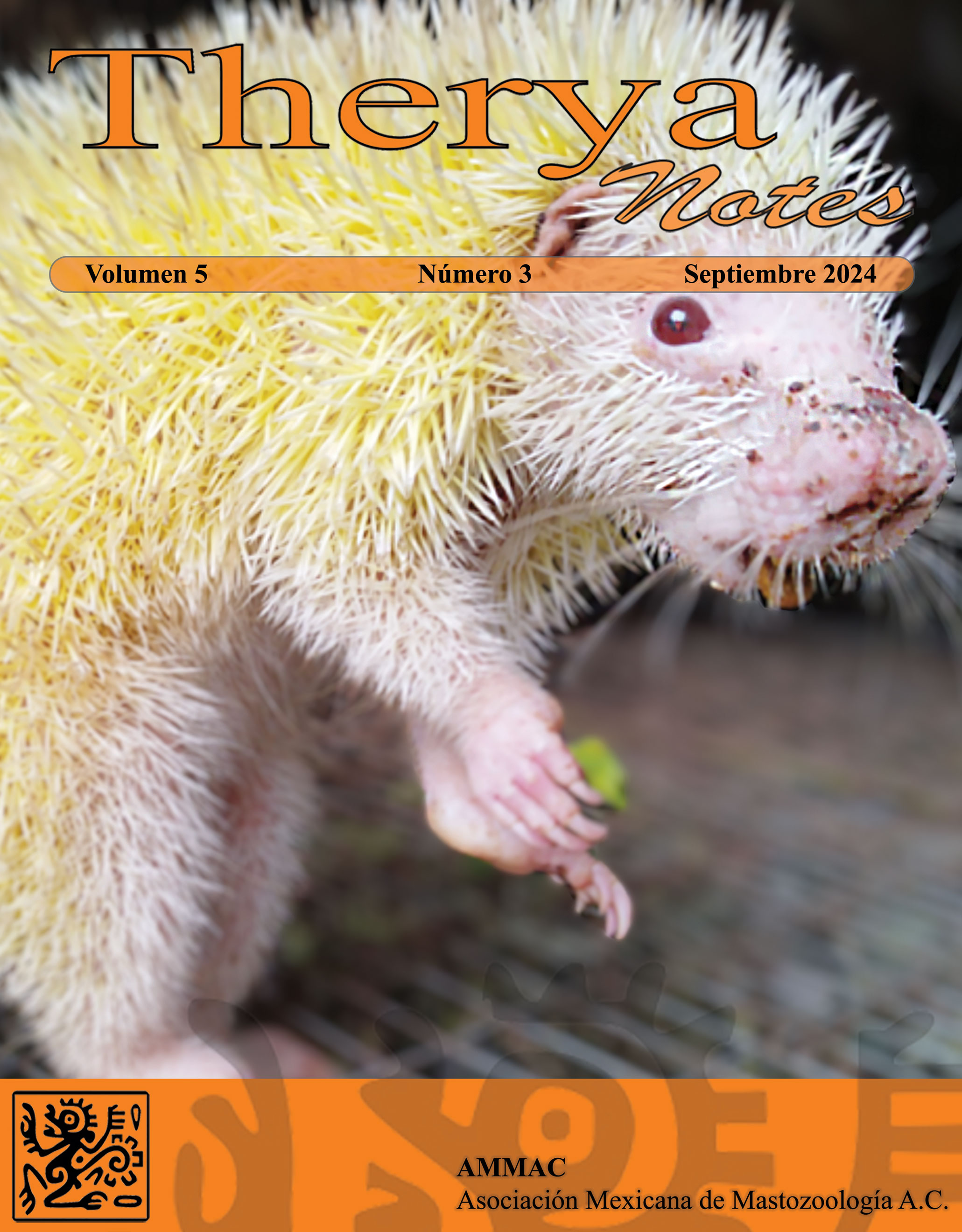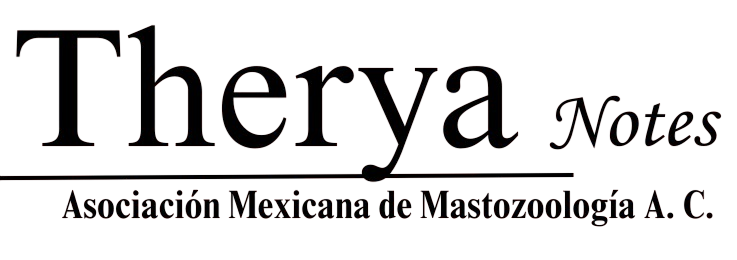First record of albinism in the Quichua Porcupine, Coendou quichua in Ecuador
DOI:
https://doi.org/10.12933/therya_notes-24-176Keywords:
Color aberration, Neotropical mammals, Northwestern EcuadorAbstract
Anomalous coloration is a phenomenon that is regularly observed in mammals. Cases of albinism are relatively uncommon; for example, they have been reported in less than 2 % of rodent species. For the first time, we report a case of albinism in a porcupine, based on a specimen collected in northwestern Ecuador. An injured Quichua Porcupine exhibiting anomalous coloration was rescued in a roadway in proximity to the Bosque Protector La Perla, situated within the province of Santo Domingo de los Tsáchilas. It was preserved as a museum specimen in skin, skull and skeleton. Identification was confirmed by external skull characters, but we also sequenced the molecular marker cytochrome b (Cyt b) for phylogenetic support. The specimen is an old female. The animal exhibited yellowish dorsal quills and white quills on the belly. The eyes are red, while the face, ears, hands, and feet are pink. Genetic analysis of the mitochondrial marker Cyt b confirmed the identification of the specimen as Coendou quichua. This report presents the first documented case of albinism in Coendou quichua. Furthermore, this report increases the number of species of the genus Coendou with cases of albinism to 3, and represents the third mammal species reported in Ecuador with this condition. We also present a phylogeny and comment on the possibility of cryptic diversity within the genus.
Downloads
Published
How to Cite
Issue
Section
License
THERYA NOTES is based on its open access policy allowing free download of the complete contents of the magazine in digital format. It also authorizes the author to place the article in the format published by the magazine on your personal website, or in an open access repository, distribute copies of the article published in electronic or printed format that the author deems appropriate, and reuse part or whole article in own articles or future books, giving the corresponding credits. The Creative Commons CC BY-NC-SD license is used.![]()















